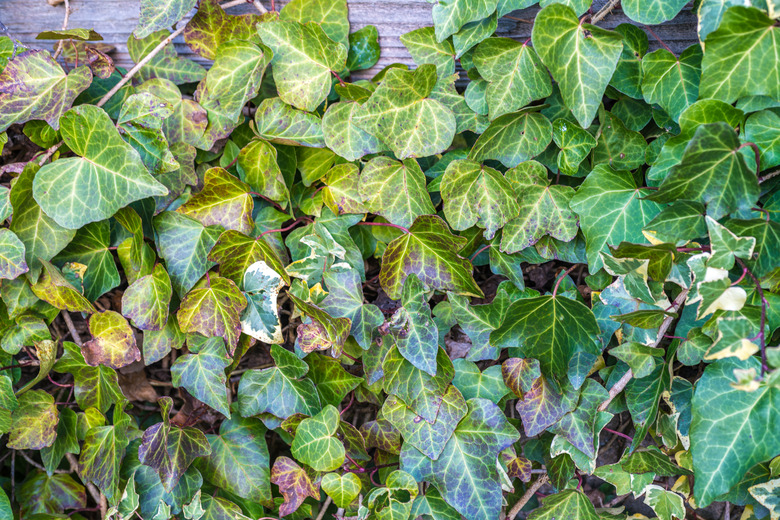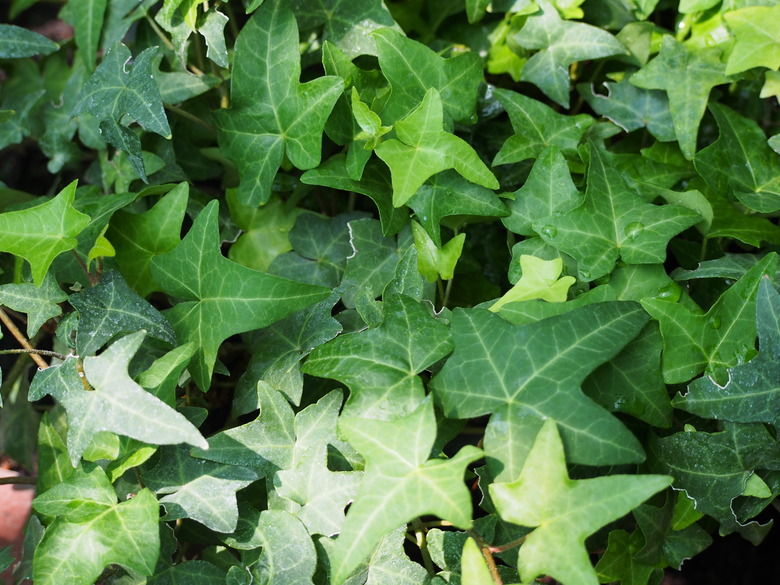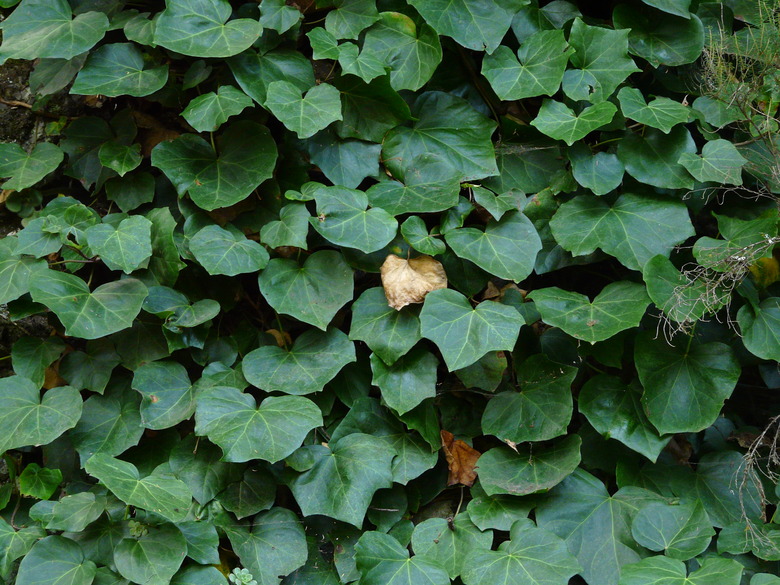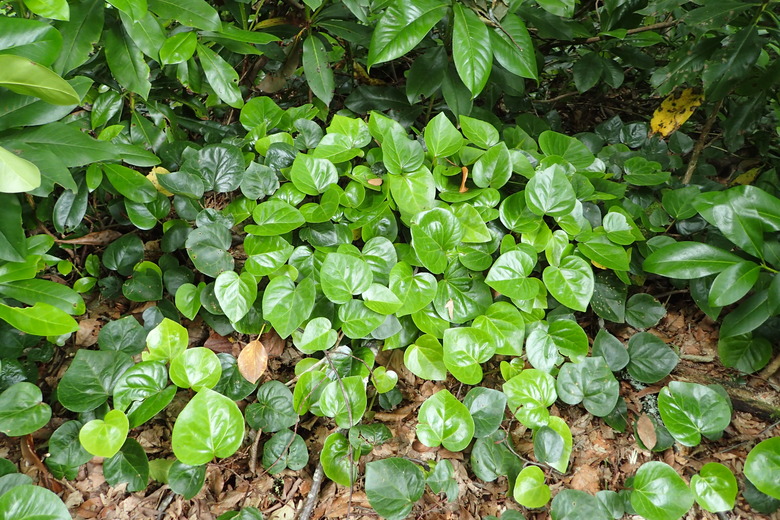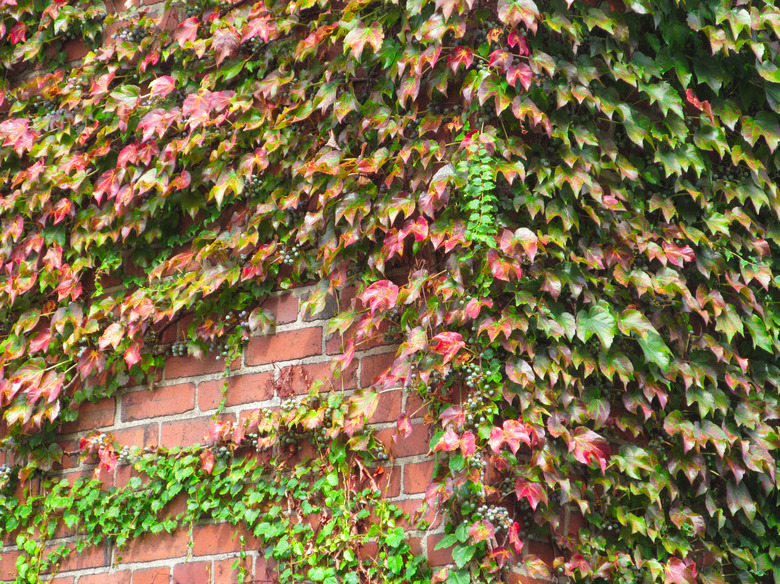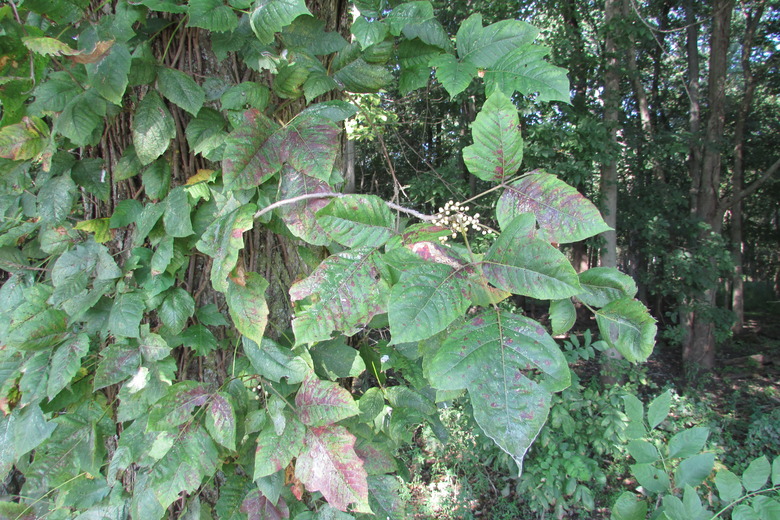Types Of Ivy Plants
Ivy plants (Hedera spp.) are woody, evergreen climbing vines that are prized as ornamentals. Most have glossy green leaves, though variegated cultivars are also available. Unfortunately, as attractive as they are, a few common types of ivy are invasive, meaning they should not be planted.
True Ivy Varieties
While species in other genera have the word "ivy" in their name, true ivy plants are those in the genus Hedera. Aerial rootlets allow these vines to climb the sides of buildings, trees and other structures.
English Ivy
The most common ivy plant is the English ivy (Hedera helix, zones 4 to 9), which is grown as a climbing vine as well as ground cover. Native to Europe, it was introduced in North America by colonizers.
There are hundreds of English ivy cultivars on the market. However, this species is considered invasive and is not recommended in many parts of the U.S. due to how aggressively it spreads.
English ivy can be grown indoors as a houseplant in temperatures between 50 and 70° F. For an English ivy plant to perform well indoors, you'll need to provide it with the humidity it craves.
Algerian Ivy
Algerian ivy (Hedera canariensis, zones 7 to 9) is a species of ivy native to the Canary Islands and the northern coast of Africa.
Algerian ivy has heart-shaped leaves that are more spread out along the stem than those on English ivy. The leaves also have reddish pubescence, or hairs, on the underside. These hairs are also present on the petioles, which are the stalks that attach leaves to the stems.
Like the English ivy, Algerian ivy is considered an invasive species in many parts of the country.
Warning
According to the North Carolina Cooperative Extension, Algerian ivy is extremely toxic and can cause severe skin irritation.
Persian Ivy
With leaves that are heart-shaped and 4 to 10 inches long, Persian ivy (Hedera colchica, zones 6 to 9) has the largest foliage of any true ivy species, according to the Missouri Botanical Garden. It reaches lengths of 10 to 15 feet after 10 years.
This species is native to Turkey and the Caucasus region and is also grown as ground cover.
Boston Ivy vs. English Ivy
Boston ivy (Parthenocissus tricuspidata, zones 4 to 8), which is the species that gives the Ivy League its name, is in a different genus than true ivies. Despite its common name, it is actually native to China and Japan.
Unlike true ivies, Boston ivy is a deciduous vine, meaning it sheds its leaves in the fall. The leaves usually have three lobes with lengths between 4 and 8 inches.
Boston ivy has sucker disks, or holdfasts, that allow it to cling to a variety of surfaces, including wood, stone and brick. Like English ivy, Boston ivy can grow unchecked and can become invasive to the point of damaging electrical wiring and gutters on buildings.
Poison Ivy
As its name suggests, poison ivy (Toxicodendron radicans, zones 4 to 10) contains a toxic substance called urushiol that causes strong skin irritation, which is why this plant should never be handled without gloves.
Poison ivy is native to the U.S. It can be identified by its compound leaves, each of which has three leaflets. Plants can often be removed with herbicides.
References
- Missouri Botanical Garden: Hedera colchica
- Clemson Cooperative Extension: Ivy
- Missouri Botanical Garden: Hedera helix
- Missouri Botanical Garden: Parthenocissus tricuspidata
- North Carolina Cooperative Extension: Hedera canariensis
- University of Florida IFAS Extension: Hedera canariensis
- Missouri Botanical Garden: Toxicodendron radicans
- Clemson Cooperative Extension: Growing English Ivy Indoors
